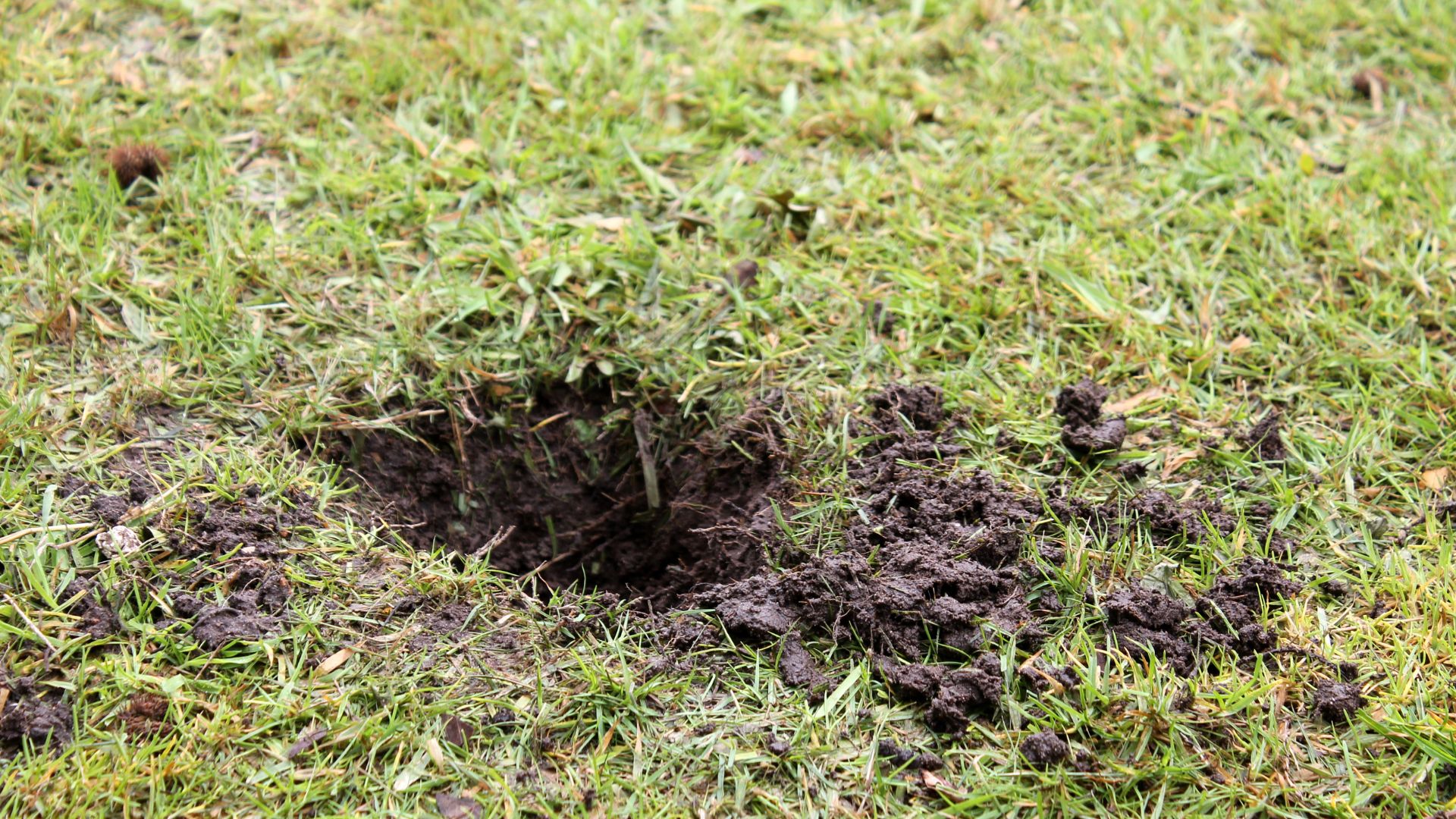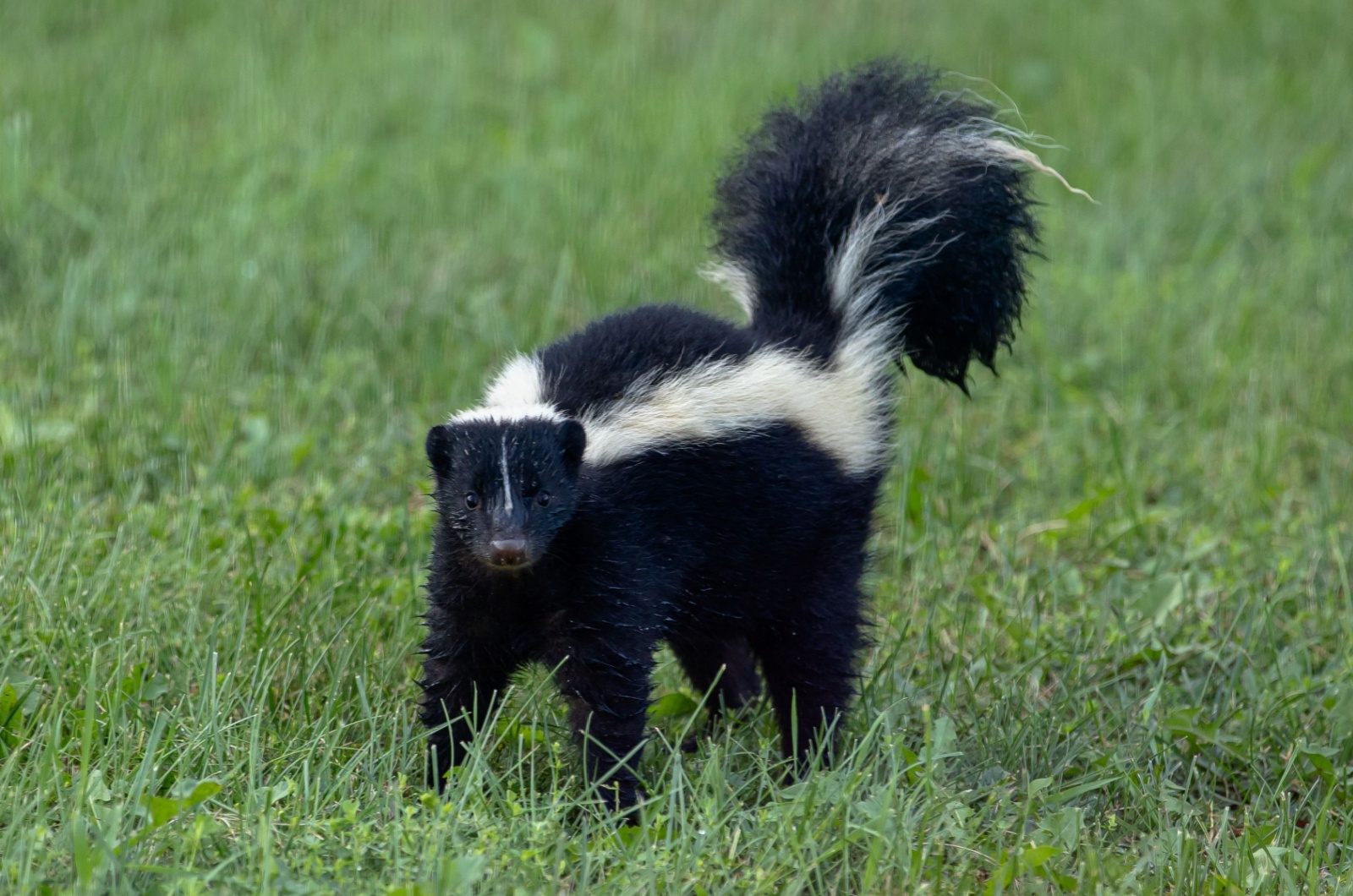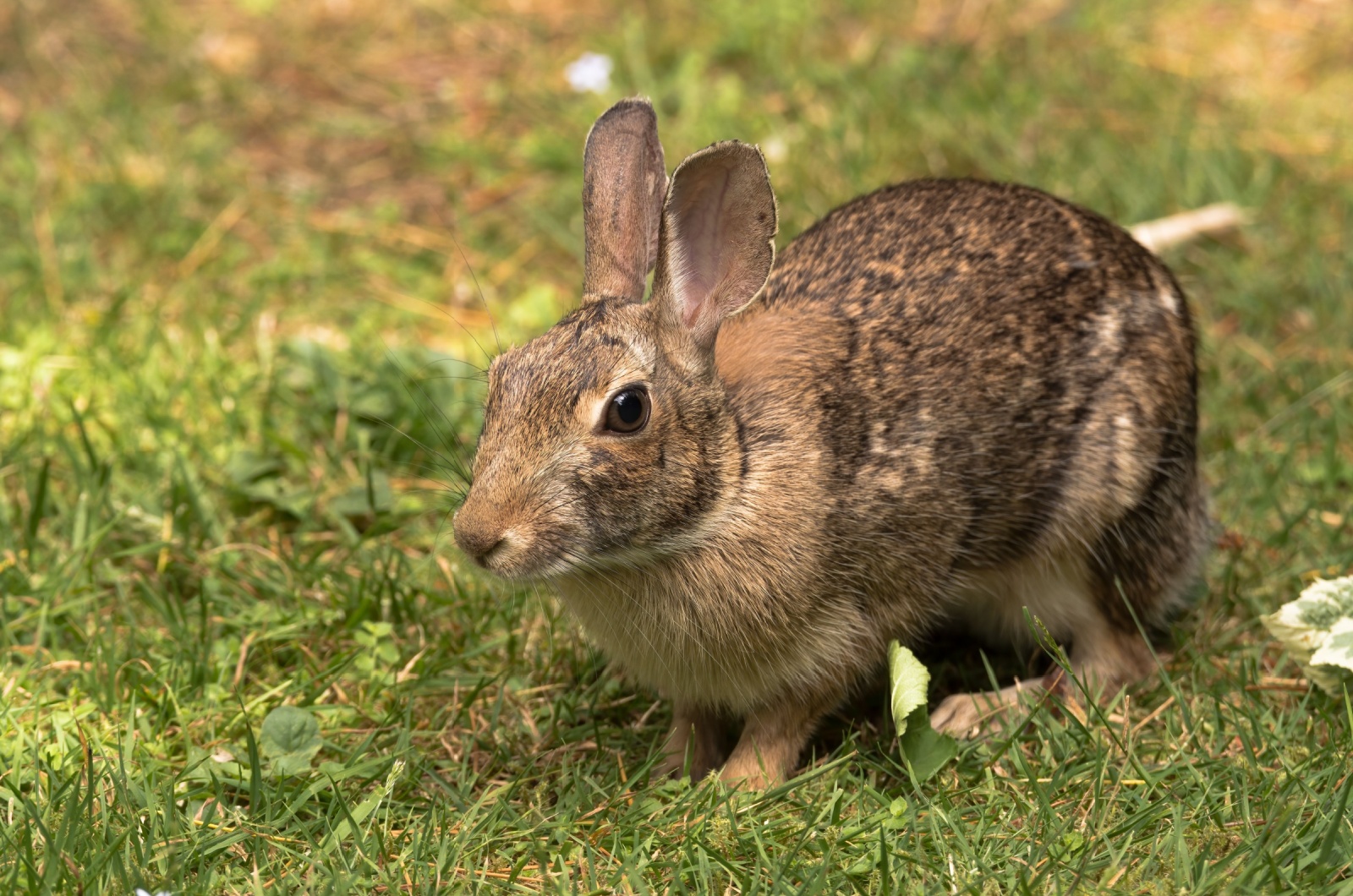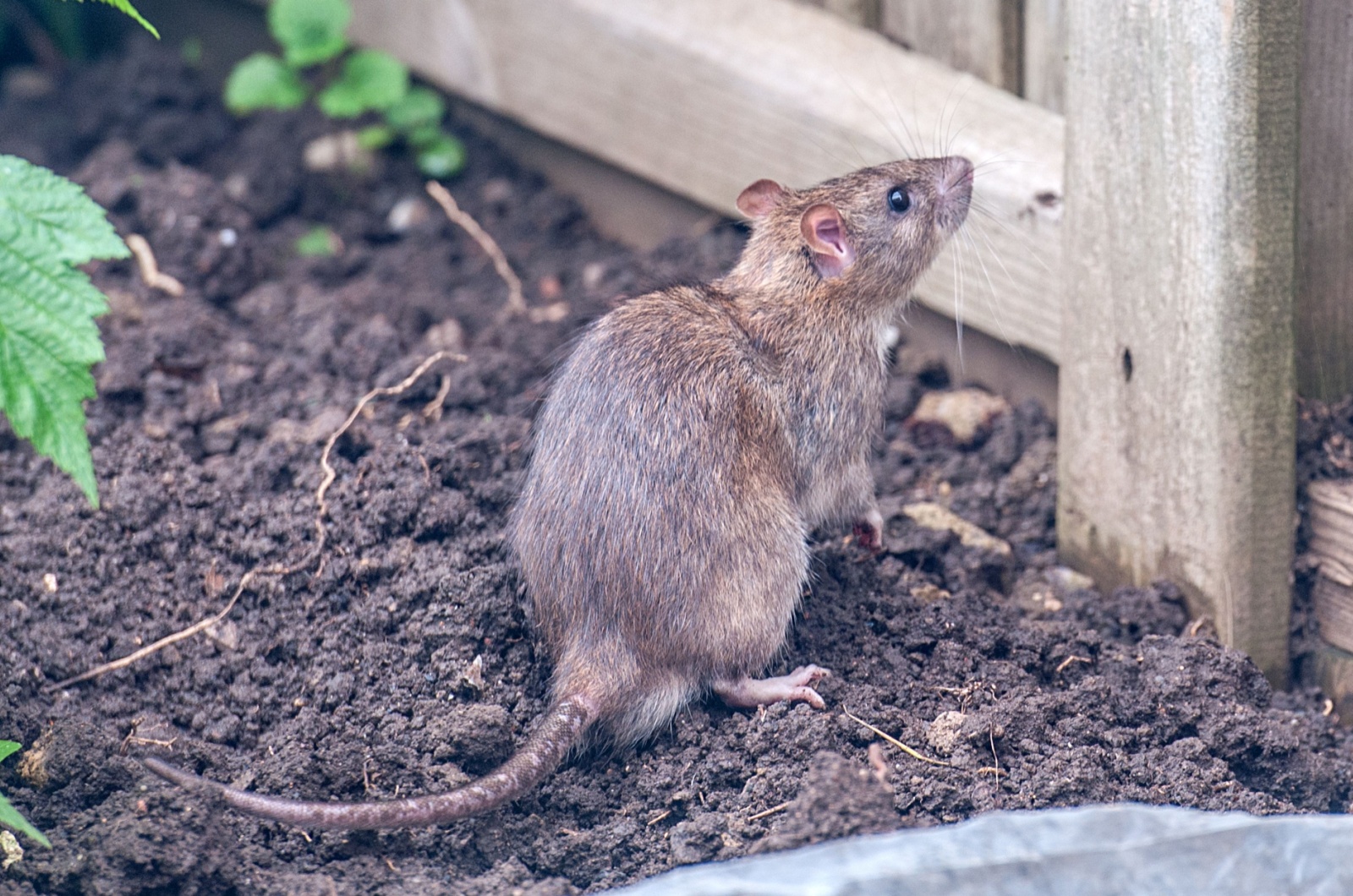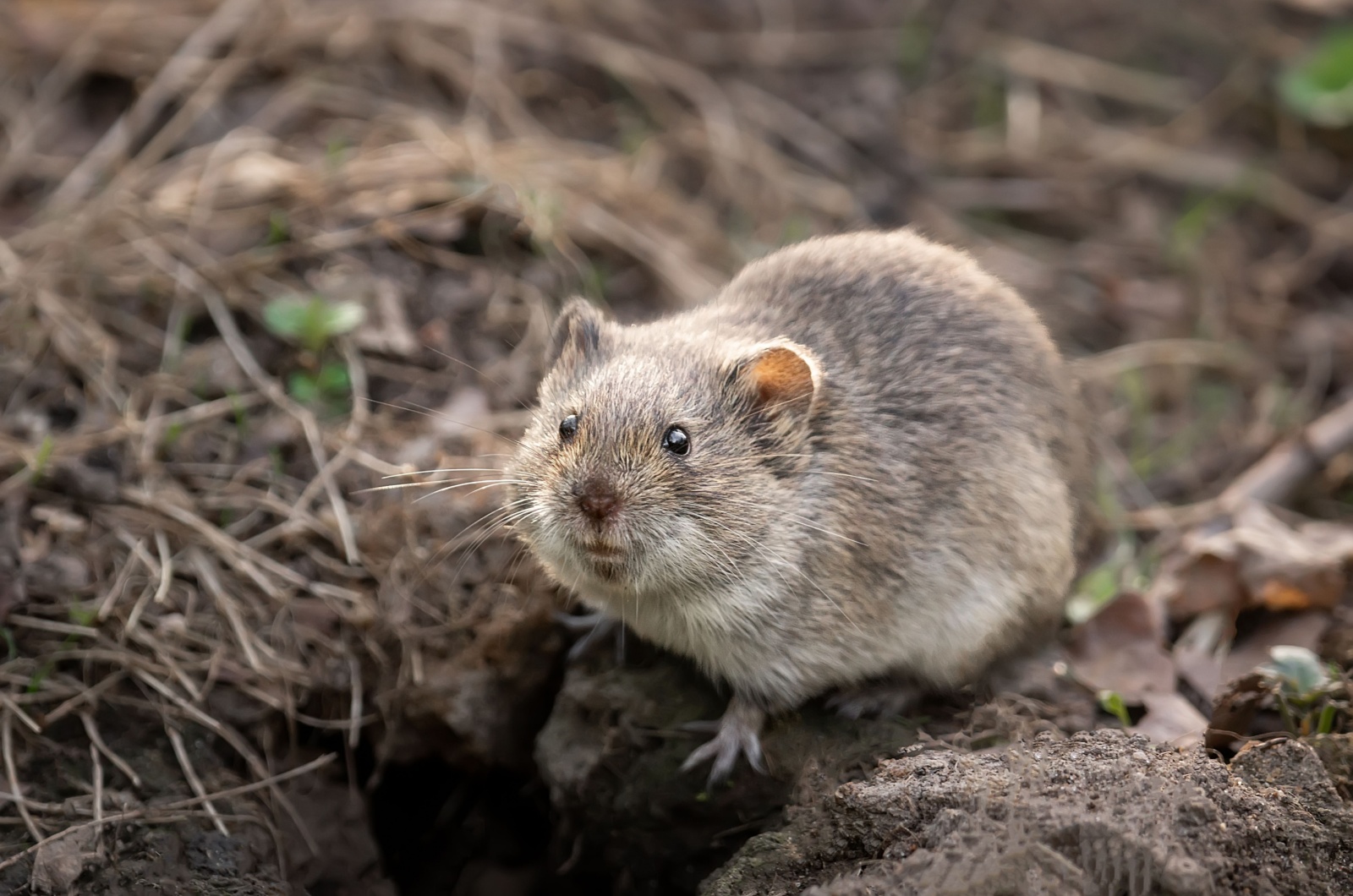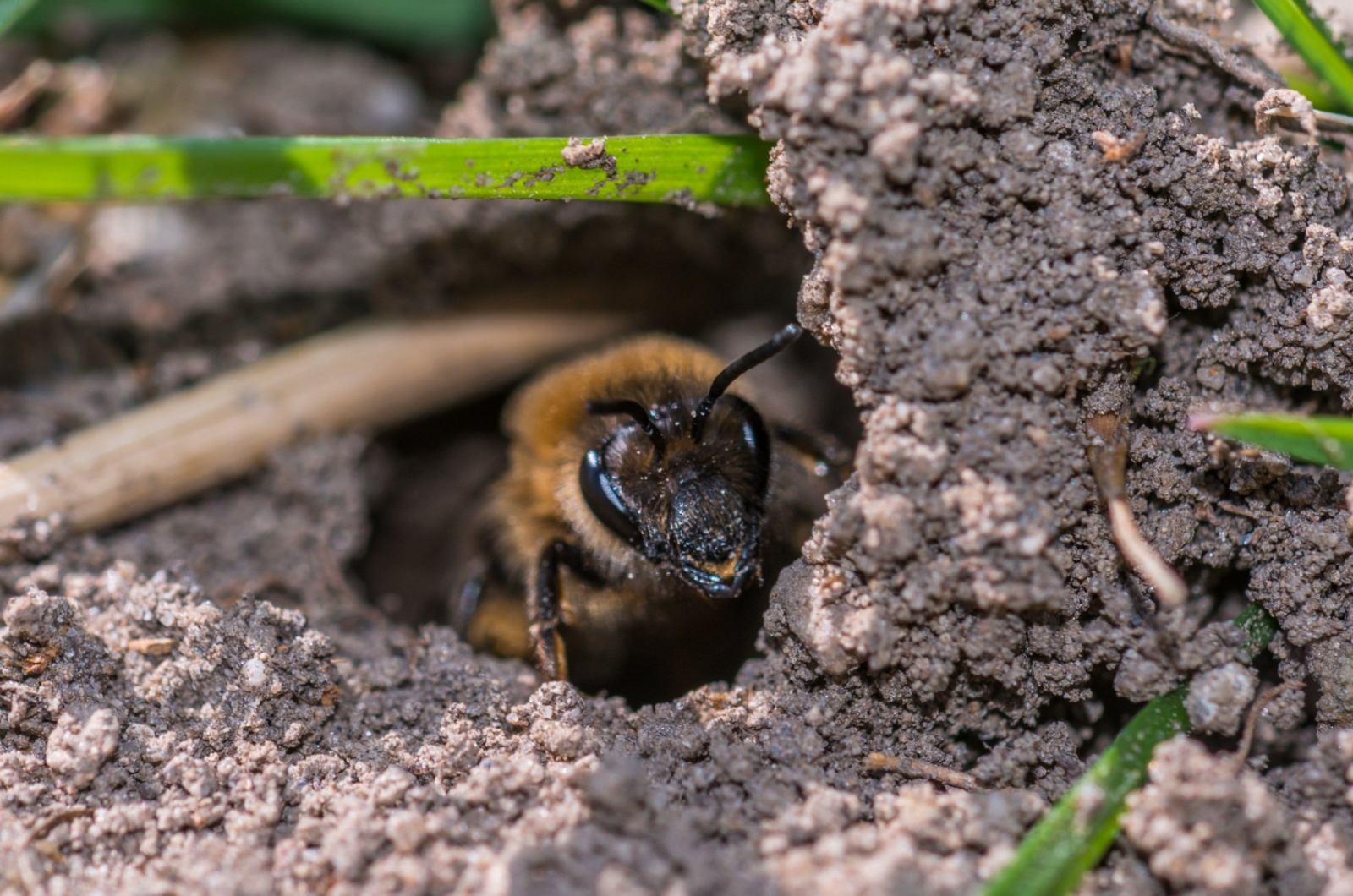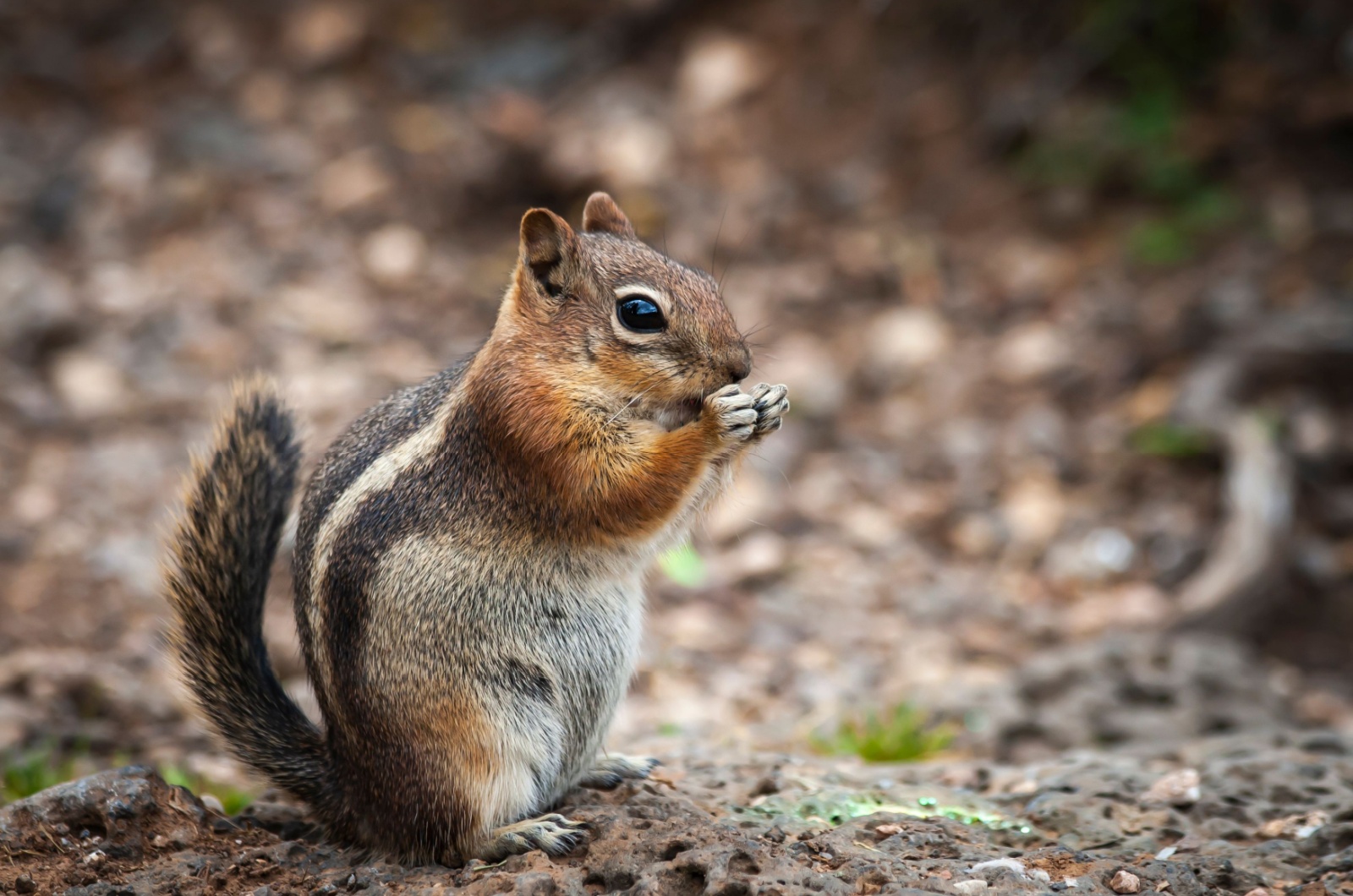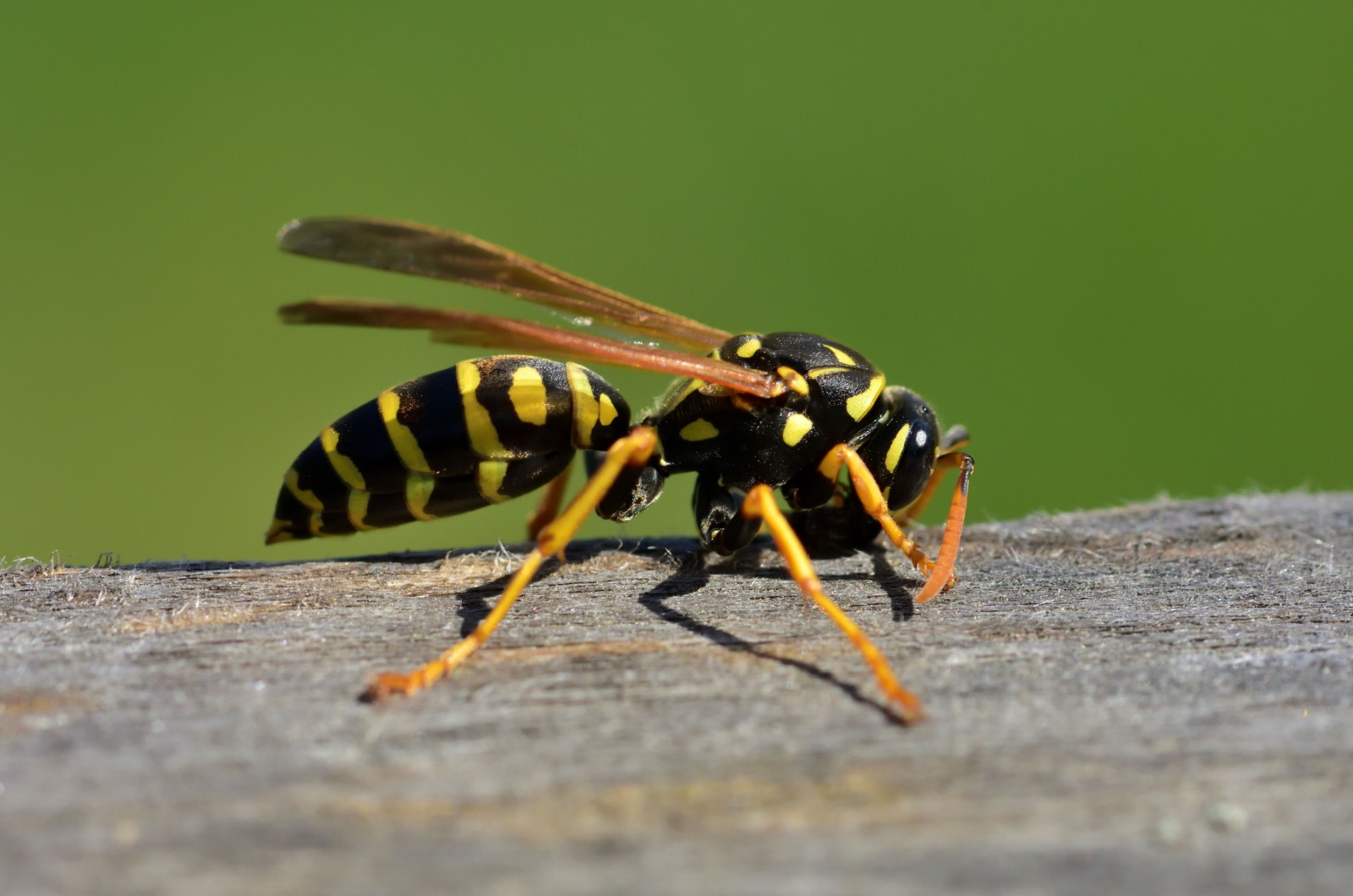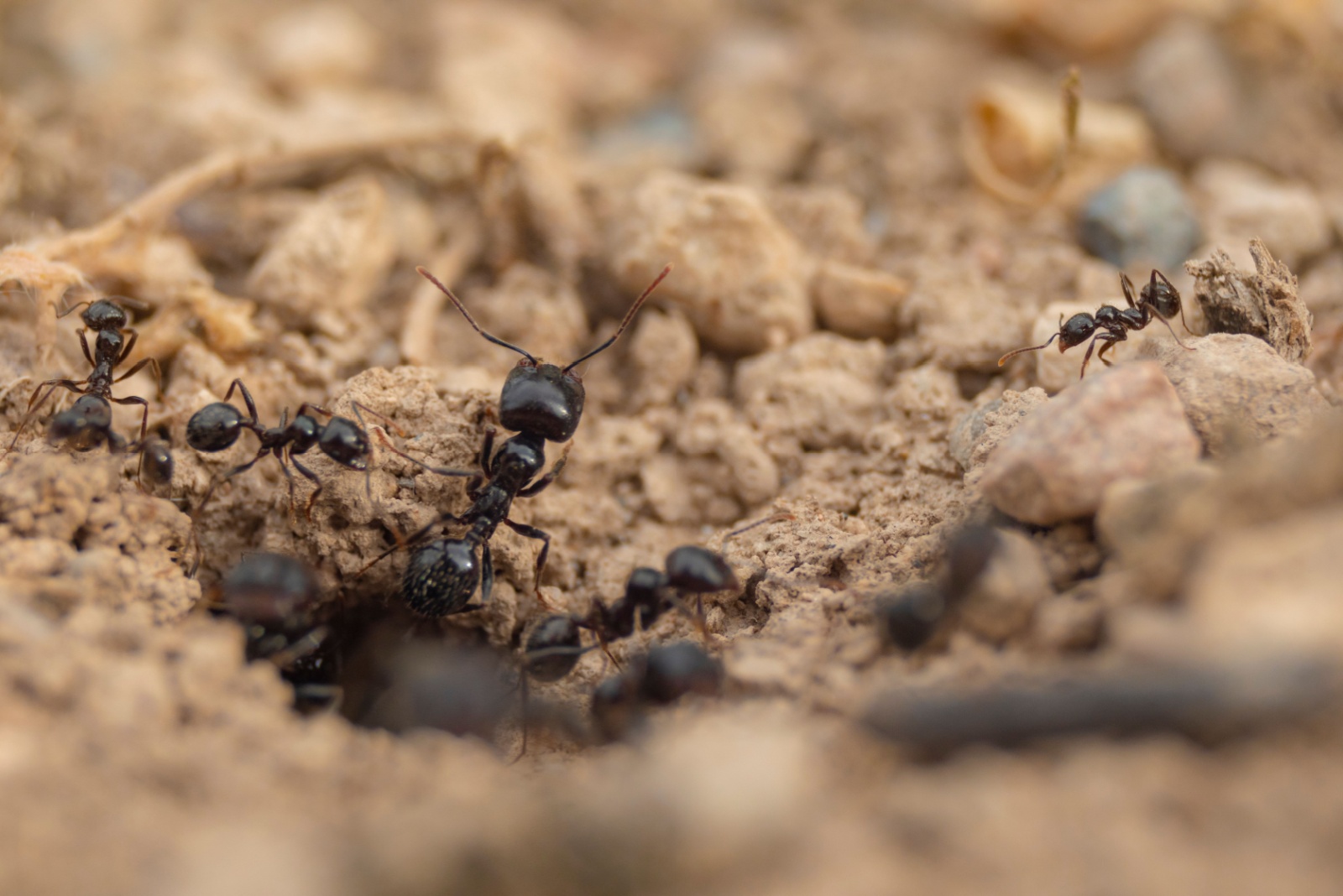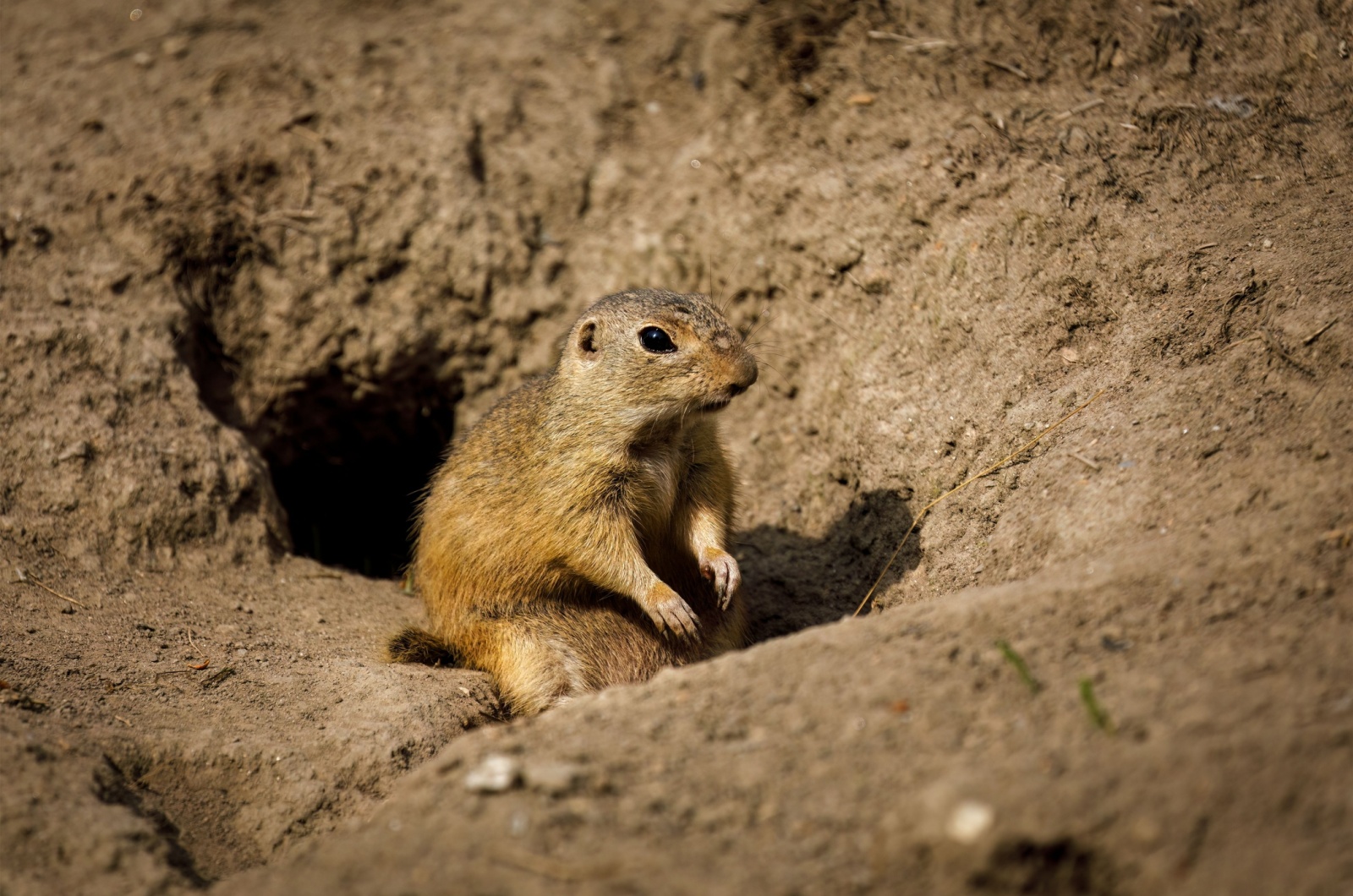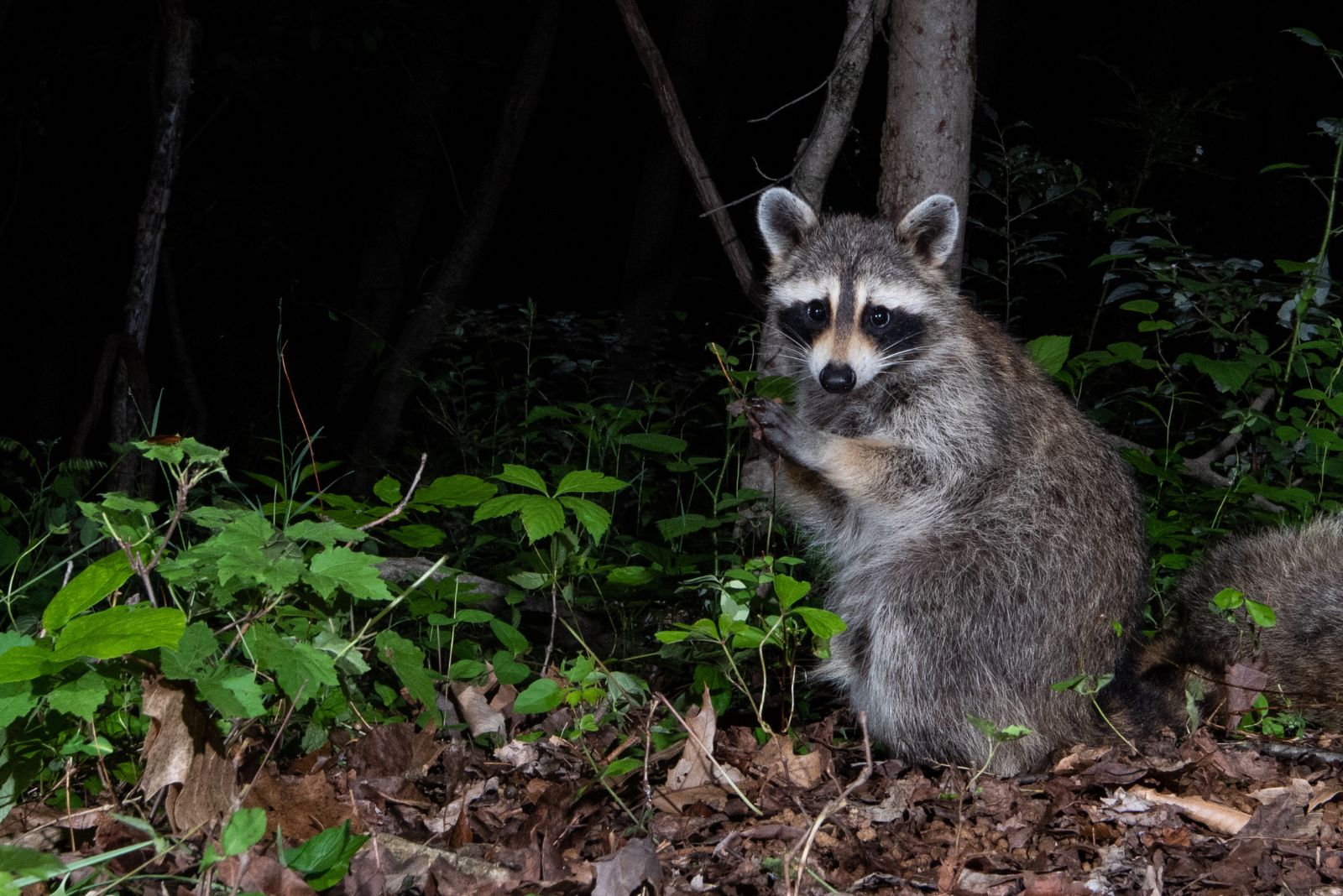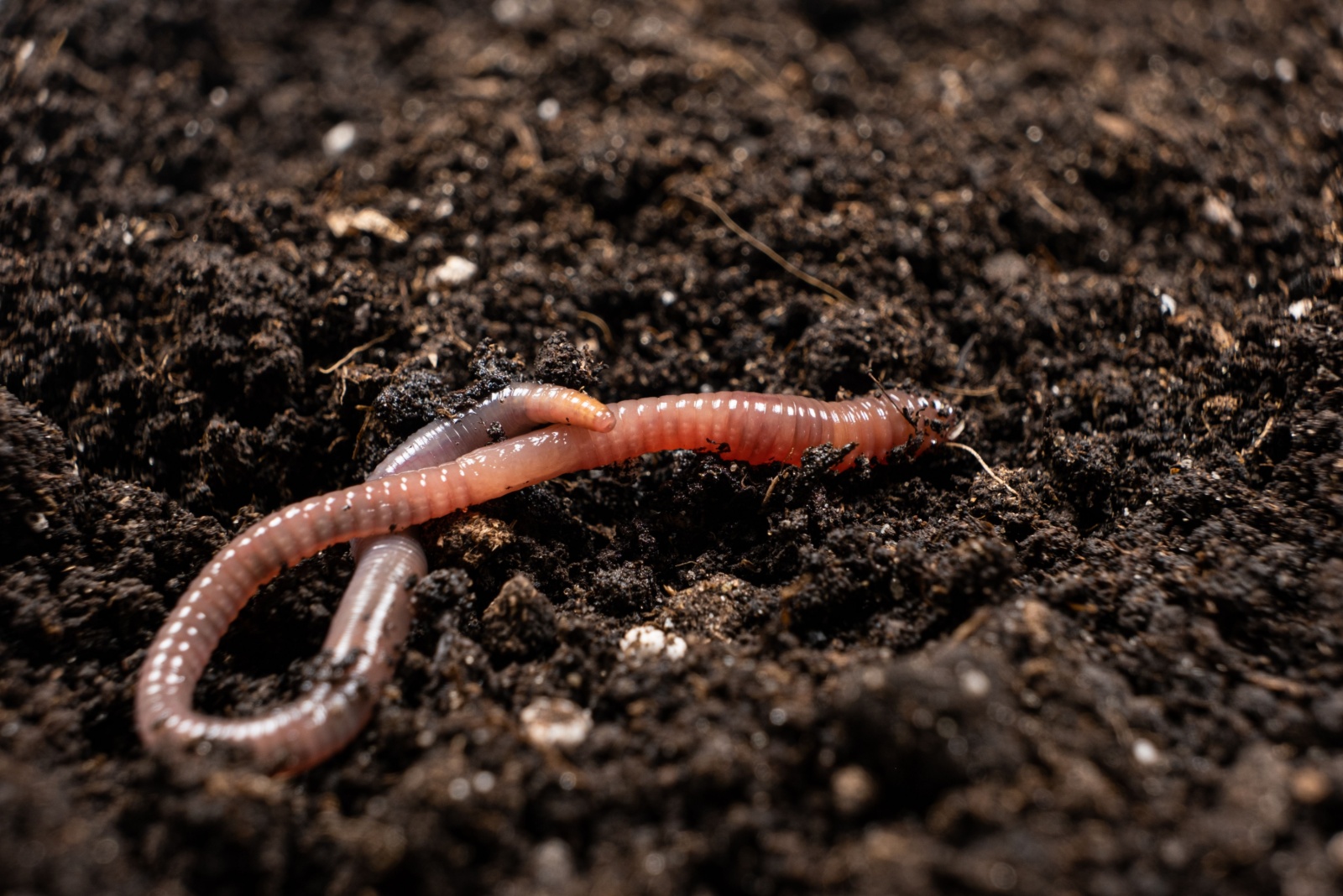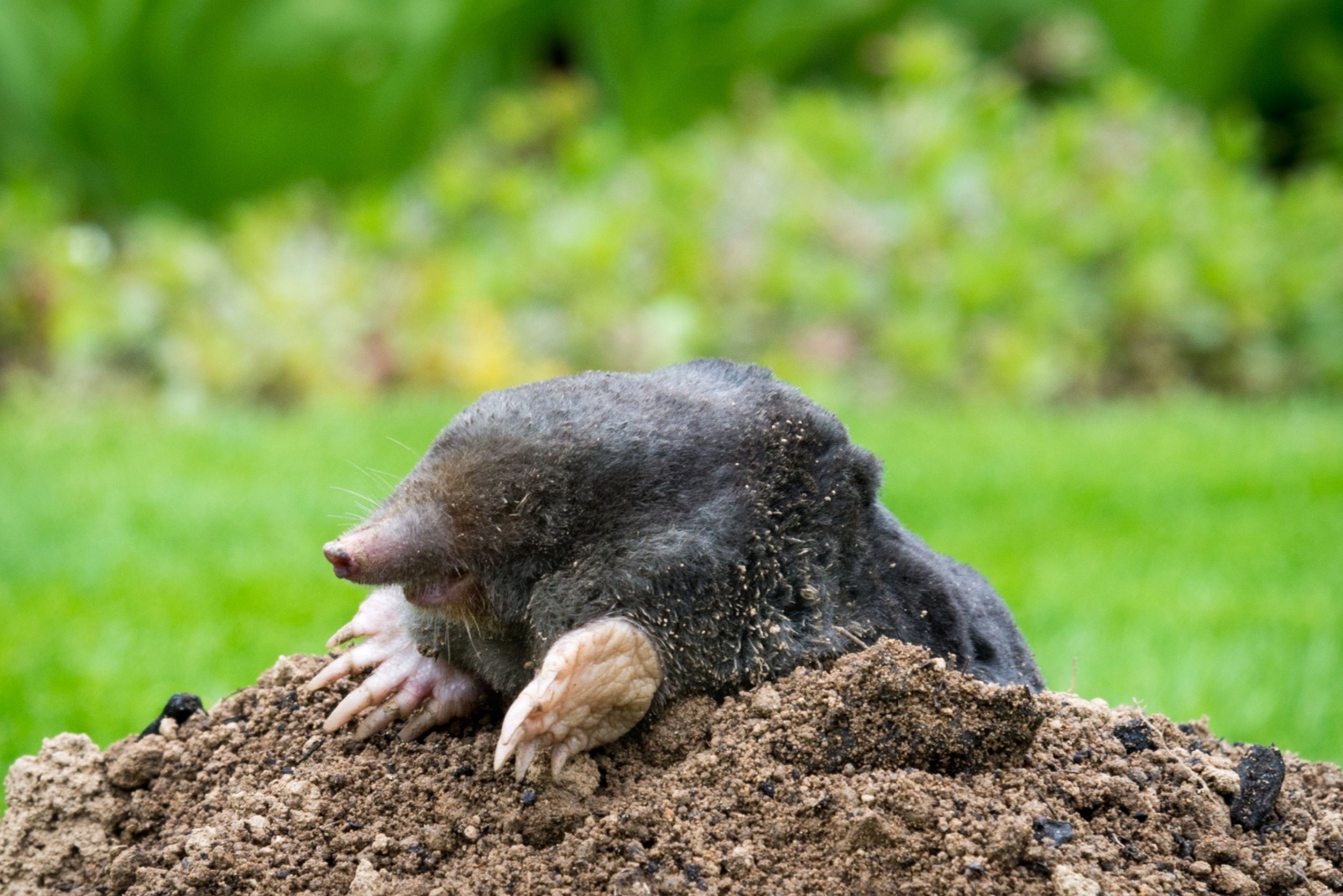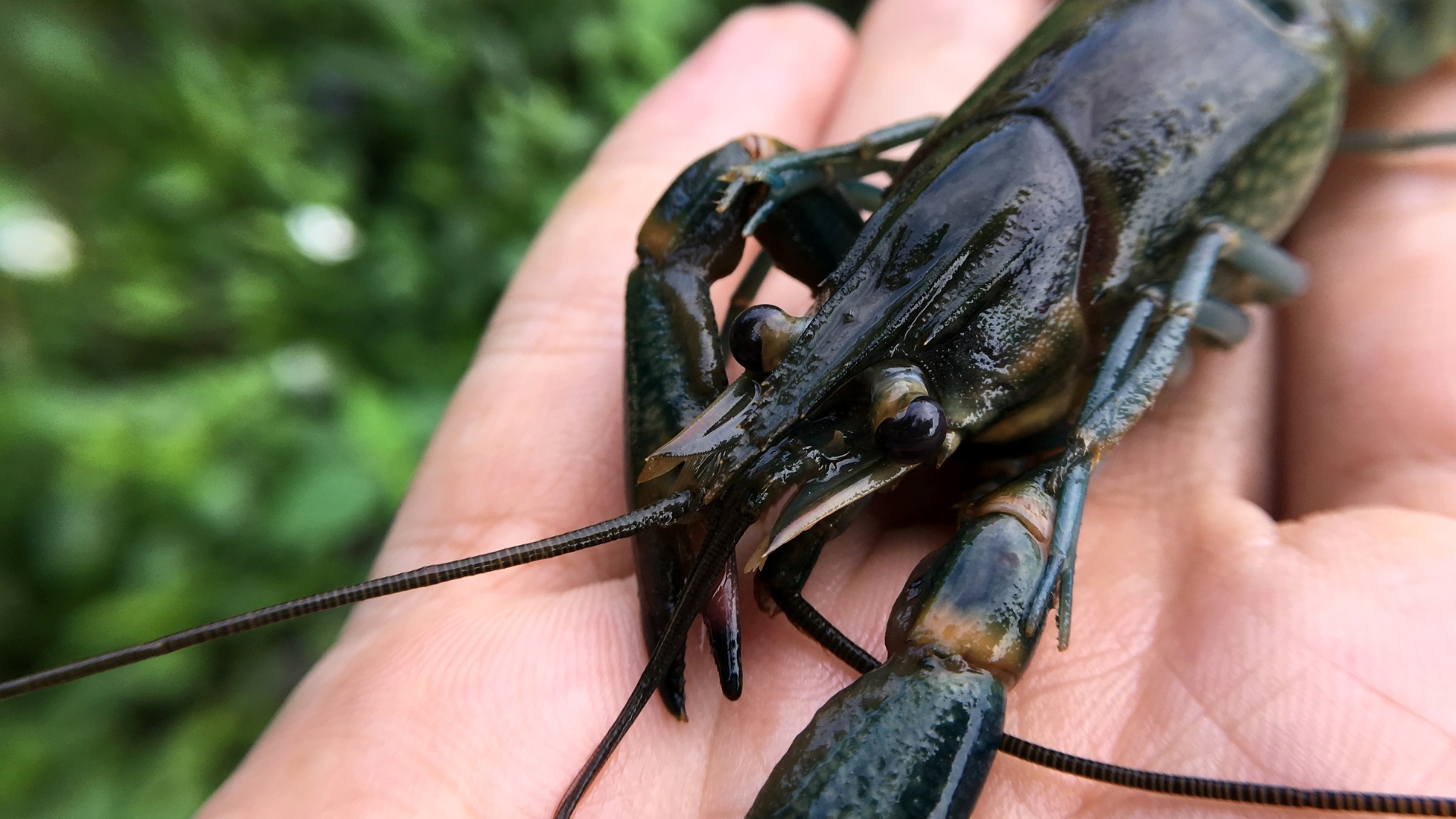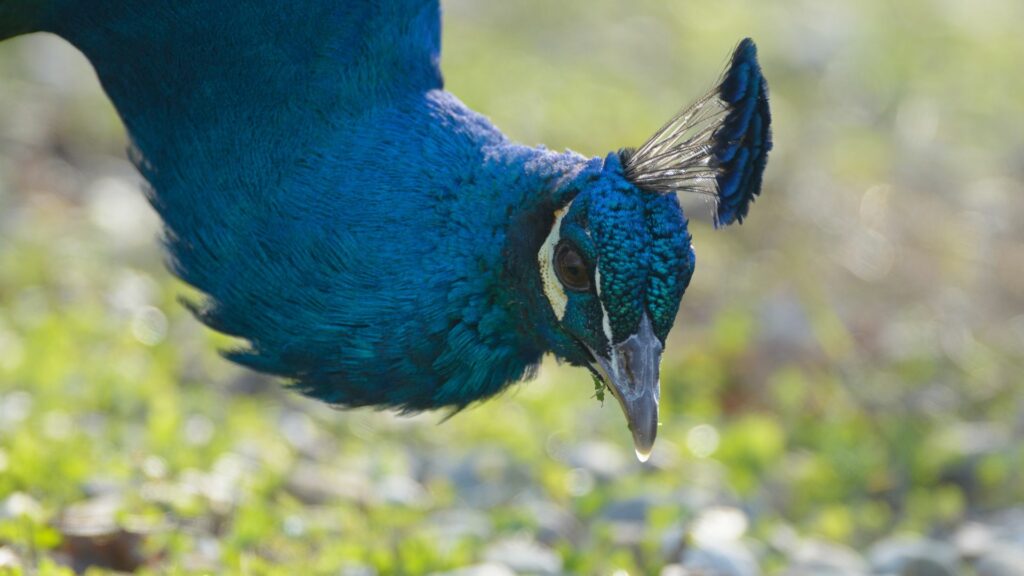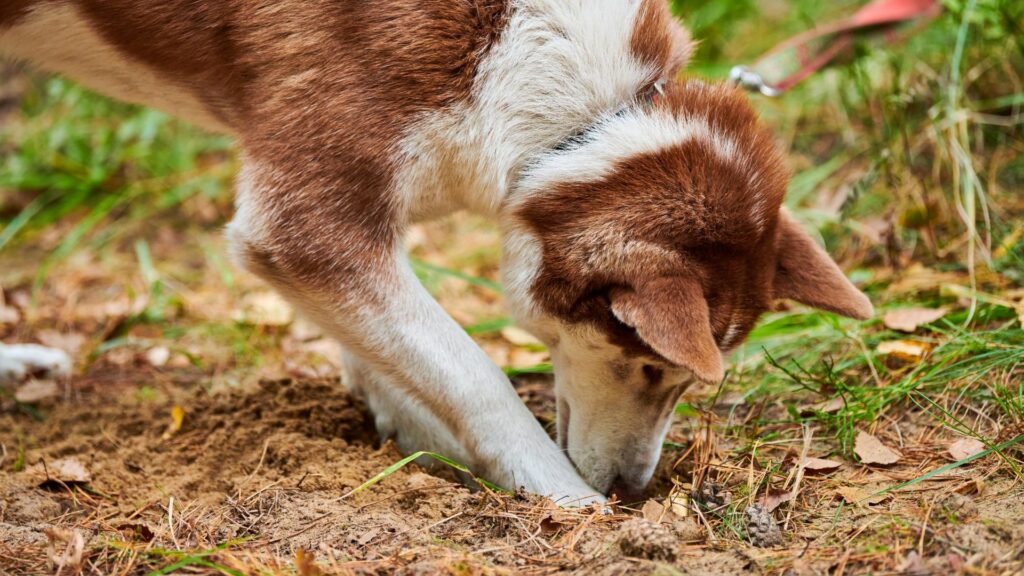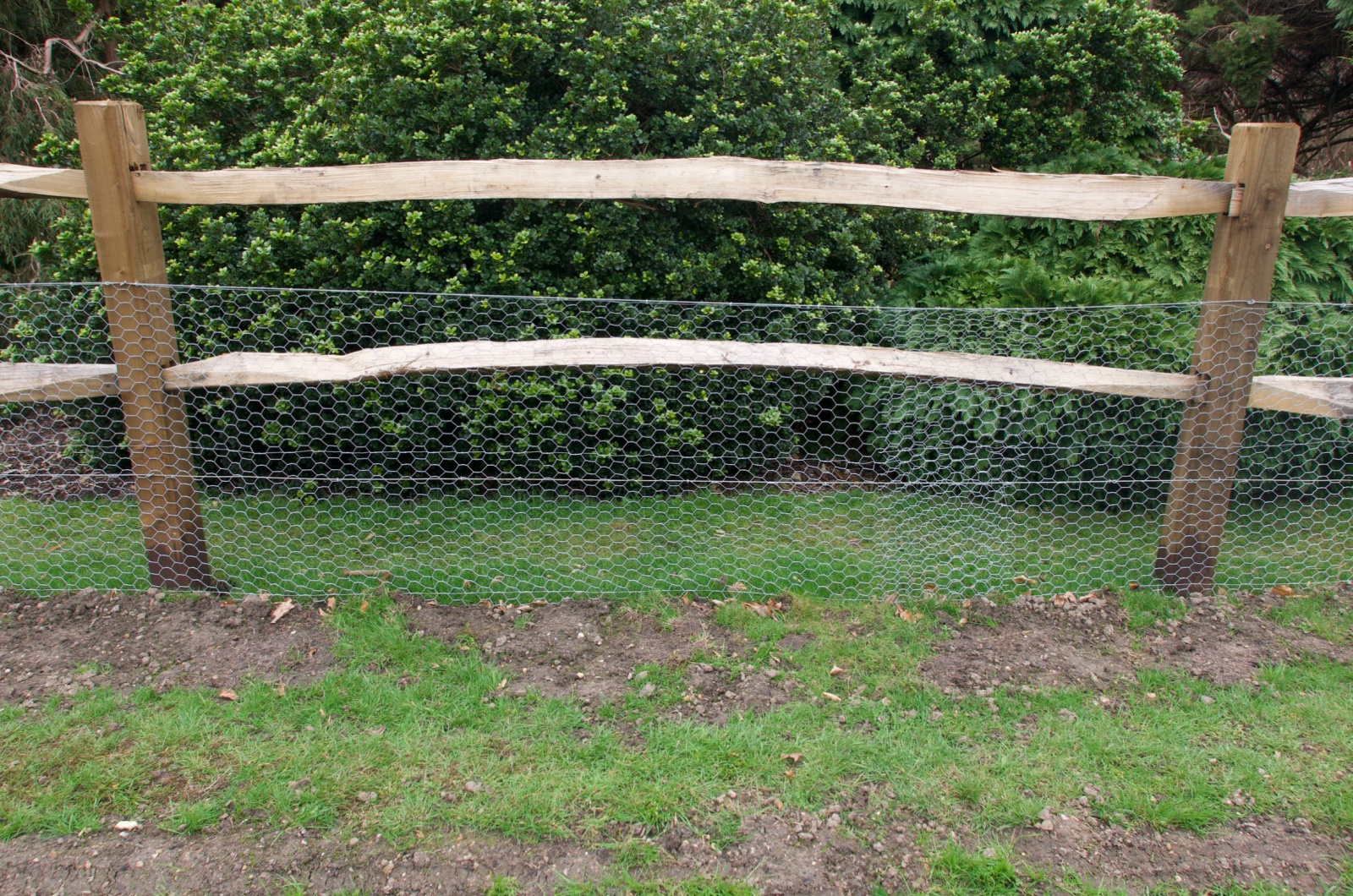We can all agree that keeping a yard in top shape isn’t exactly a walk in the park. Getting that neat, polished look takes more than just a little TLC.
And just like that, one morning you spot holes scattered across the yard, but no mounds to explain them. Frustrated doesn’t even begin to cover how I felt the first time I saw it.
It’s no secret that animals and insects are often the culprits, but how can you be sure which ones are to blame? Luckily, details like where the holes are and their size and shape can point you in the right direction.
No need to fret! I’ll show you how to spot the troublemaker and put an end to the mess they’ve made.
1. Skunks Always Come With Trouble
Well, where there’s trouble, there are skunks around! I don’t even have to mention their stinky smell that makes things even worse.
A group of skunks may be looking for grubs and they will create countless holes to complete their search.
So, how to know for sure if they’re the culprits? If the holes are a few inches in diameter and so shallow that you can see the bottom, skunks are most likely to blame. Their holes don’t lead to tunnels!
2. Rabbits Are Skilled Little Creatures
I need you to be careful with this one! You see, female rabbits often dig holes so that they can hide their young. The nests they create are typically shallow.
You’ll most likely notice a patch of dead grass, holes lined with it, some fur, and leaves all over the holes. This way, rabbits try to ensure protection for their babies.
3. Where There Are Rats, There Are Also Holes
Rats won’t be the first thing on a yardowner’s mind when they spot holes. But there are some species of these little rascals that make holes.
They’re actually burrowing the tunnels and the holes you see in your yard or garden are the entrances to their nests.
The holes are smooth and approximately 3-4 inches in diameter, and there are hard-packed walls around them.
4. Voles Will Leave Their Mark Underground
I guess you saw this one coming! It’s hard to differentiate between moles and voles but the type of hole can help you determine which is the cause.
Voles typically make holes but there aren’t any mounds around them. The hole is about the size of a golf ball and pretty shallow. Sometimes, holes caused by voles are oval-shaped.
5. Groundhogs Are Masters Of Deep Digs
And here’s a pest that creates a pretty big mess after it visits your yard! If your yard is covered in numerous holes that are about 12 inches in diameter, groundhogs are most likely to blame.
Their burrowing skills are amazing! What you need to understand about groundhog holes is that there’s always a main entrance which will be accompanied by mounds and auxiliary entrances.
The latter is typically located in an open-grass area, so you have to search for the main entrance, which is probably placed somewhere near a fence or a tree.
6. Don’t Let The Size Of Ground-Nesting Bees Fool You
Many yardowners don’t realize that some species of bees build their nests in the ground. These nests are a reason why you’ll spot holes all over your yard.
For instance, bumble bees always hang out around a hive but if they spot some holes made by rodents, they may use it to enter the hive.
Some species, such as sweat bees, are more oriented toward digging the tunnels themselves and creating nests in the ground.
As expected, the holes are tiny, typically half an inch in diameter, and the soil around them is dry and sandy.
7. Chipmunks May Be Cute, But They’re Crafty Burrowers
Cute? Yes. Destructive? Also yes. Chipmunks are another skilful digger and they create 2-inch wide holes, but there aren’t any mounds around them.
Believe it or not, these rodents store the dirt in their cheeks while digging, so it’s harder for you (or some predators) to spot the holes. Smart cookies, right?
8. Don’t Underestimate Yellow Jackets!
Once a rodent leaves a hole, a yellow jacket will see it as a perfect opportunity to create a nest in the ground for themselves.
That’s why you’ll find the holes in multiple sizes and shapes. But the holes are typically found in dry soil, and as the nest of the yellow jackets becomes larger, the holes will be bigger.
I’ve also noticed that there’s debris piled up around the hole that yellow jackets use as an entrance to their nests.
The blessing in disguise is that you can spot yellow jackets entering and coming out of these holes so that you know for sure the culprit.
9. Ants Can Be Sneaky Soil Dwellers
Ants may be small, but the nests they create underground are a big deal. You might notice little holes in the soil, scattered in random places throughout your yard.
These tiny holes, about 1/8 inch wide, are easy to miss if you’re not paying close attention. But don’t let their size fool you!
The ants are busy creating vast networks of tunnels below the surface, which can cause the soil to shift and destabilize over time.
Look for these holes in areas that are dry or where the ground feels softer than usual. The more you can catch them early, the easier it’ll be to prevent the kind of damage that can make your yard feel more like an ant kingdom than a garden!
10. Squirrels Are Skilled Underground Foragers
Squirrels might be known for their acrobatics in the trees, but don’t let that distract you from their impressive digging skills!
When fall rolls around, these little critters take to the ground in search of food, creating small, hidden holes in the soil. These holes, usually around 2 to 3 inches wide, can pop up unexpectedly, especially near flower beds, garden paths, or trees.
They’re experts at burying acorns, nuts, and seeds, and while it might seem harmless, their digging can lead to soil disruption, damaging roots and even destabilizing your plants.
If you’re spotting small, scattered holes with no mounds of dirt around them, you might have a squirrel problem in your yard!
11. Raccoons Can Cause Chaos Underground
When raccoons target your lawn, they aren’t just looking for food – they’re actively digging to create their own chaos.
These furry troublemakers are experts at finding insects and small animals hiding underground. Their digging usually results in irregular holes that range in size from 2-5 inches, and often the soil is pushed up in a messy, unorganized way!
If you’ve noticed unexplained patches of disturbed dirt or missing patches of grass, it’s likely a raccoon has been at work. These clever creatures can wreak havoc in just one night!
12. Earthworms Can Leave Small Holes Behind
If you’ve noticed small holes scattered across your yard and thought, “What’s going on here?” – there’s a good chance earthworms are the culprits.
Earthworms tunnel through the soil, eating organic material and leaving small, pinpoint holes in their wake. These holes are typically about the size of a pencil tip and can appear in clusters, especially after a rainstorm when the worms are most active.
So, if the forecast predicts rain for the next few days, you’ll know exactly where to look and who’s behind your messy lawn!
13. Moles Are Stealthy Underground Engineers
Moles are like secret agents of the underground world, silently working away beneath your lawn without leaving a trace – except for those little clues they leave behind!
Unlike ants, which pile up dirt in mounds, moles dig intricate networks of tunnels that disturb the soil subtly.
The first sign of their activity? Small, raised ridges or sunken patches on your yard’s surface. These tunnels, usually around 2 to 3 inches wide, are typically deeper than you’d expect – about 3 to 4 inches below the surface, but they can go even deeper in search of food.
Moles love to feast on earthworms, grubs, and insects that lurk in your soil, and they’ll dig tirelessly to find them. As they create tunnels and hunt for their next meal, they unintentionally damage the roots of your grass and plants, leading to brown patches and uneven growth.
14. Armadillos Dig Deep For Dinner
If you live in the southern U.S., armadillos might be the unexpected culprits behind the holes in your yard. These nocturnal diggers are on a constant search for grubs, earthworms, and insects, leaving behind small, cone-shaped holes about 3-5 inches wide and several inches deep.
Unlike some animals that make shallow scrapes, armadillos go deep, creating noticeable damage in loose soil, mulch beds, and grassy areas. Their foraging habits can make your yard look like it’s been hit by tiny meteorites overnight!
To stop them, try motion-activated sprinklers or strong-smelling deterrents like garlic or castor oil, which they can’t stand.
15. Crayfish Create Mud Chimneys In Wet Yards
If your yard stays damp or has standing water after heavy rains, crayfish burrows might be the reason for those strange holes. These freshwater crustaceans dig vertical tunnels, sometimes up to 3 feet deep, to access underground water sources.
Unlike other burrowers, crayfish leave behind small, muddy chimneys around the hole, making them easy to identify. Their holes can be about 1-2 inches wide and often appear near ponds, ditches, or swampy areas.
Since crayfish thrive in wet environments, improving drainage is the best way to prevent them from taking over your yard. If the problem persists, filling their holes with gravel or sand can help make the area less appealing to these little diggers.
16. Birds Can Peck Away At Your Lawn
It might sound odd, but some birds – especially starlings, crows, and robins – can be responsible for small holes in your yard. These birds aren’t digging deep; instead, they’re using their beaks to peck at the soil in search of insects like grubs, beetles, or earthworms.
You’ll usually spot multiple shallow holes scattered in clusters, often in areas where the lawn seems disturbed or where you’ve recently watered. There won’t be any mounds, just messy little dips in the grass.
If birds are to blame, the damage typically happens during early morning hours, and you might even catch them in the act!
17. Dogs Can’t Resist A Bit Of Digging
If you’ve got a canine companion (or a neighbor’s pup is paying secret visits), they might be the ones creating those mysterious holes. Dogs often dig when they’re bored, anxious, or trying to escape the heat by reaching cooler soil.
The holes tend to be medium to large, with uneven edges and usually located near fences, shady spots, or favorite hangouts.
Even if you don’t own a dog, it’s worth checking with neighbors or setting up a camera to see if a four-legged friend is sneaking in and treating your yard like their playground!
Here’s What To Do To Stop These Holes!
And now the part you’ve all been waiting for. The first step to stop these holes is to remove the food source, no matter which digger made the holes.
For instance, rats enjoy munching on your garden plants, so you should install a barrier around the garden beds. I always use chicken wire because it’s efficient and not too pricey.
On the other hand, skunks love grubs and they won’t hang in your yard if there aren’t a lot of grubs in the soil. Simply purchase beneficial nematodes and follow the instructions on the package.
To prevent animals and insects that look for shelter, make sure to mow your grass regularly. 3-4 inches long grass blades are ideal for the appearance of your yard and it’ll be easier for you to spot critters.
Deterrents are another great option but always opt for natural substances. For example, use coffee grounds or cayenne pepper to deter rabbits, or use mint and cinnamon for other animals.
If you can’t identify the culprit and the holes keep popping up, it’s time to contact professionals.
I get it, finding holes without mounds can be maddening. Use our expert advice to spot the culprits and keep your yard pristine for seasons to come!

